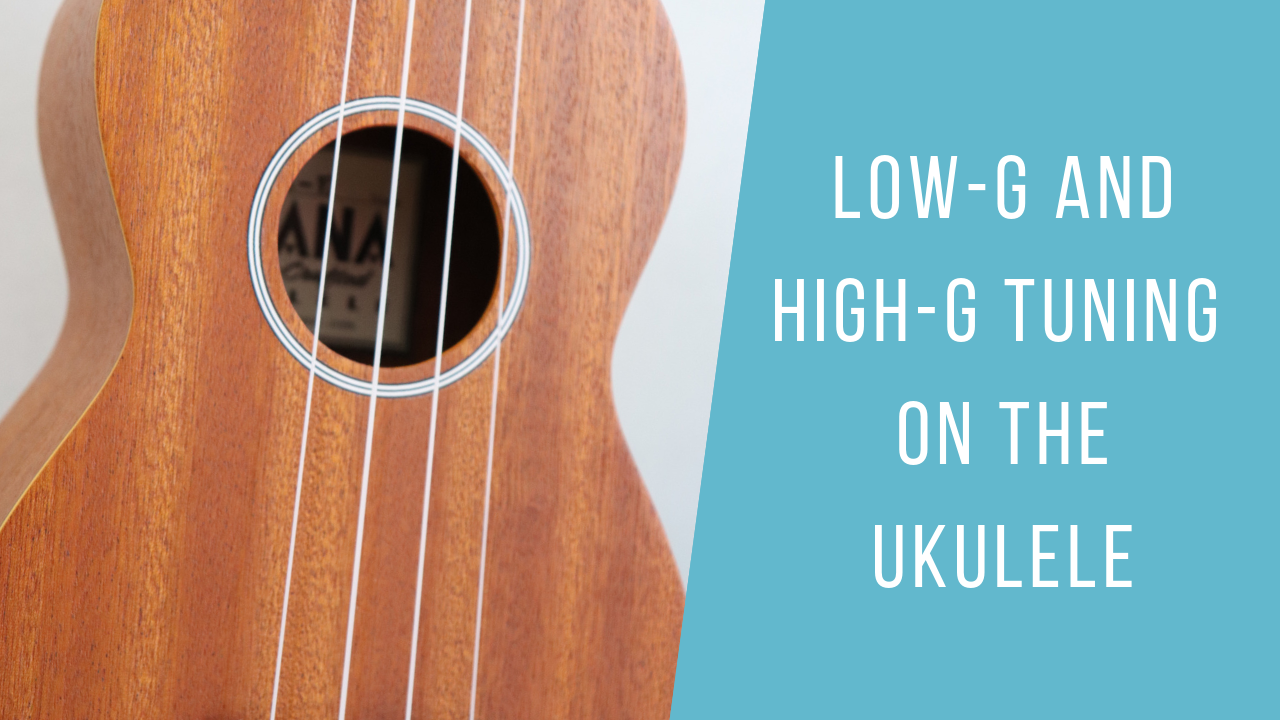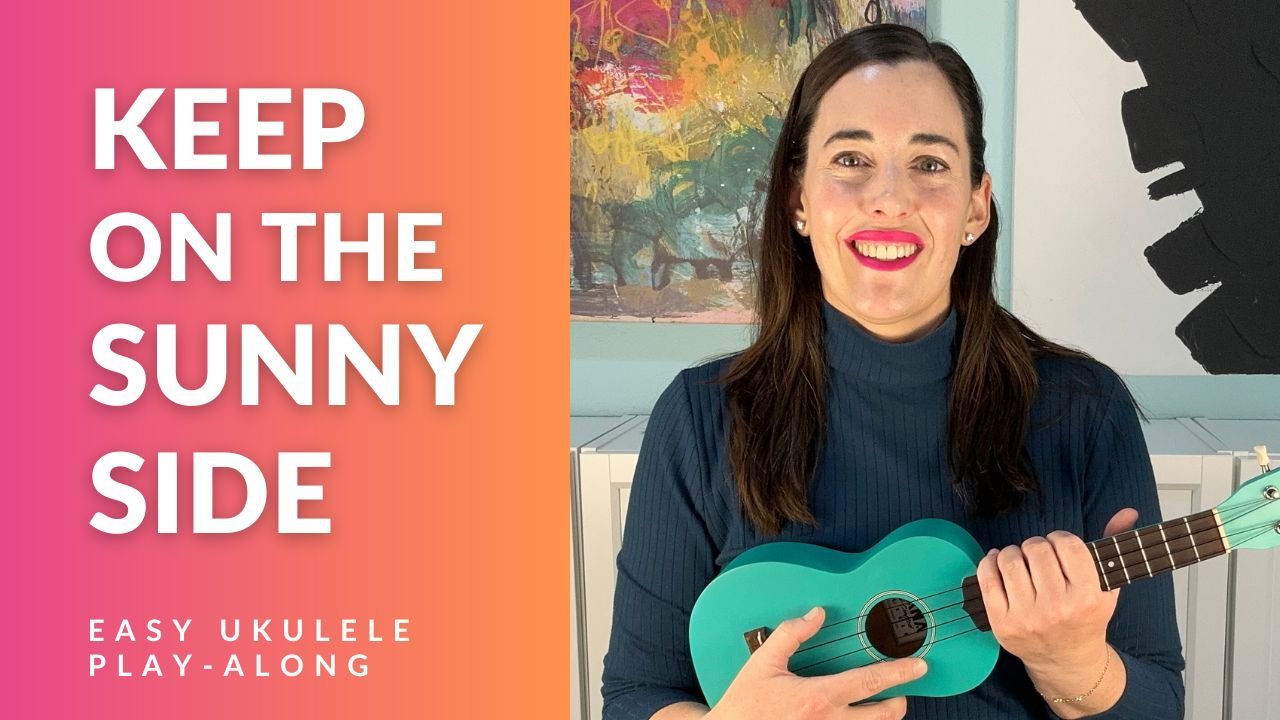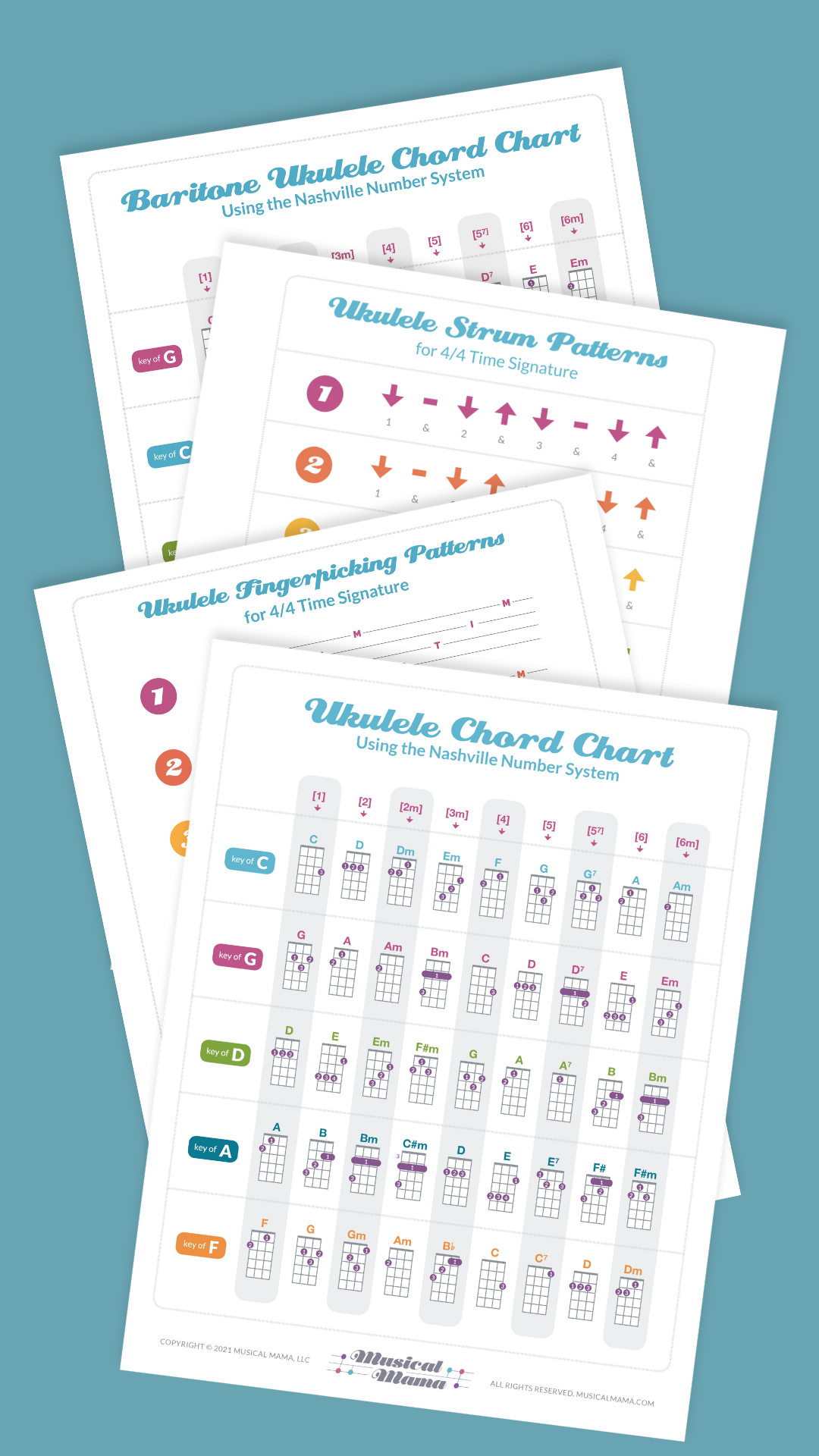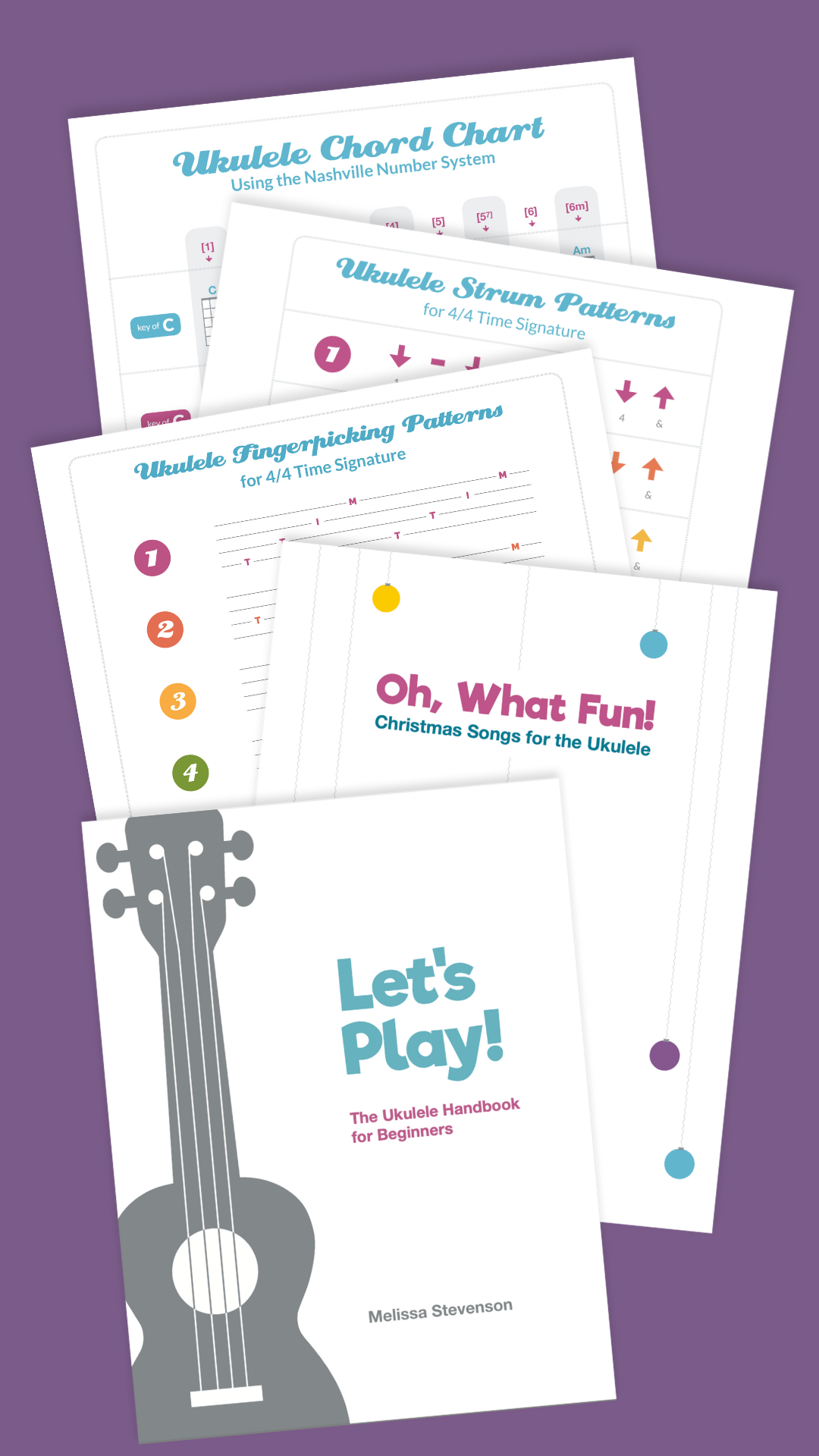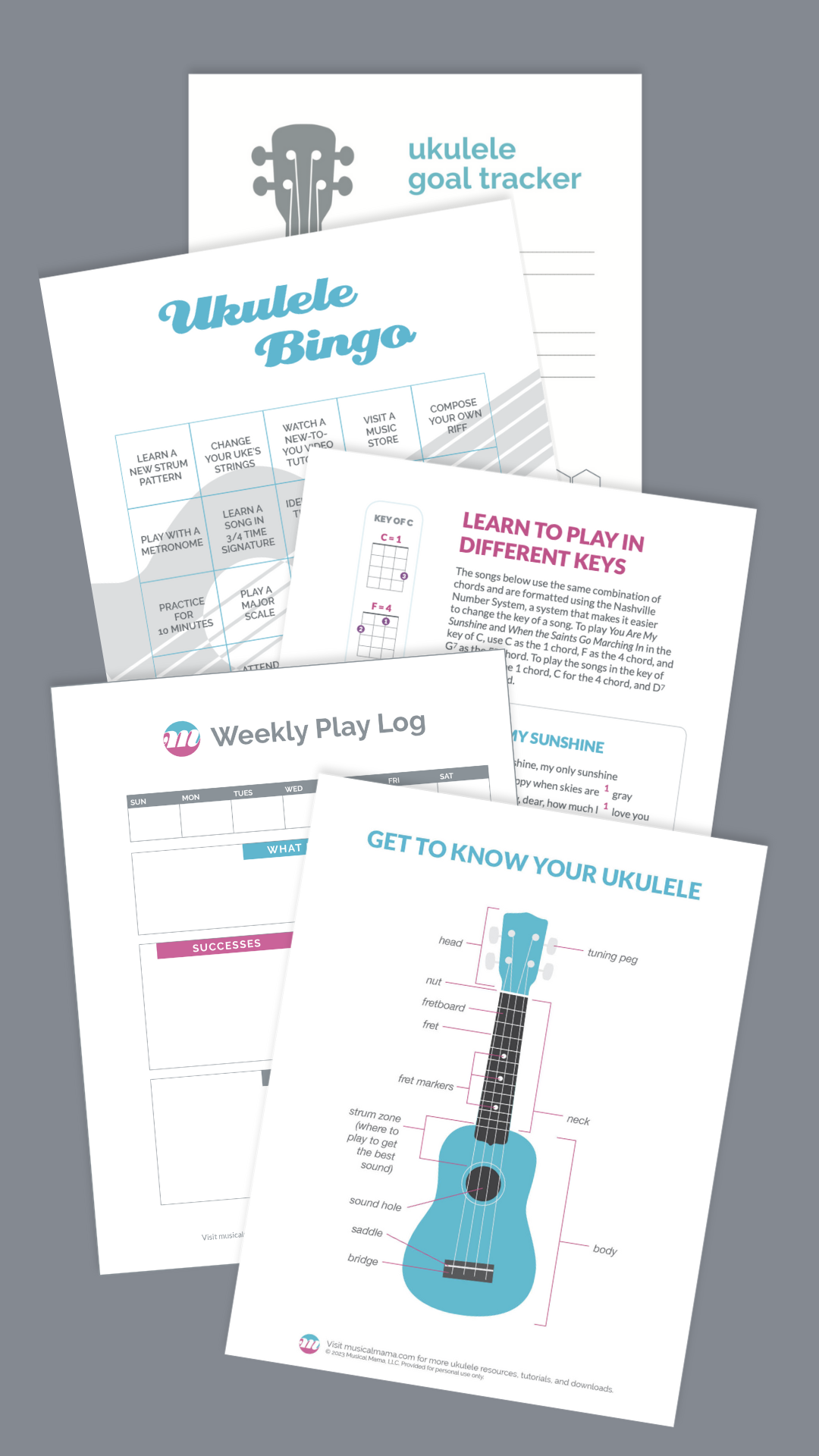Today I’m sharing an excerpt and video from my book that explains the difference between low-G and high-G tuning for the ukulele:
Read MoreMy Favorite One-Chord Song for the Ukulele
In this video, I share one of my very favorite folk songs, Li’l Liza Jane. It can be played as a one-chord song, and its beautiful melody and playful lyrics make it a really fun one to play and sing. One-chord songs are great for beginning ukulele players who are still getting comfortable making chord shapes, strumming, and singing at the same time, but they're also great if you're working on a new skill such as a more complex strumming pattern, fingerpicking pattern, or riff.
Read MoreGuilty Pleasures Part 2: A Mashup Video of "YMCA" and Justin Bieber's "Baby"
As I was compiling a list of some of my favorite guilty pleasure songs, I realized that “Baby” by Justin Bieber and “YMCA” by the Village People have the exact same chord progressions. So I made a mashup video because why not? Here’s how you can play along with me. . .
Read MoreHow to Play O, Come All Ye Faithful - Ukulele Play-Along Video with Strum Pattern, Chords, and Lyrics
O, Come All Ye Faithful is about 300 years old. Did you catch that? THREE. HUNDRED. YEARS. OLD. Its melody is beautiful and feels like a precursor to the songs that came out of Appalachia (one of the places of origin for modern American music). Perhaps that’s the reason why I tend to prefer more stripped down interpretations of this song and/or have a country twang to them. Whatever the reason, it’s a fun one to sing and strum. Enjoy!
If you enjoyed this video, please consider buying my Christmas songbook or my how-to book, Let’s Play! The Ukulele Handbook for Beginners (both are available in digital download and paperback formats). Your support makes it possible for me to share high-value content for uke players for free here on the blog. Thank you, and happy strumming!
How to Play Blue Christmas on the Ukulele (with Play-Along Video)
True facts: I once dressed up as Elvis for Halloween (in my early 20s), I once road-tripped to Graceland by myself (also in my 20s), and I even had an Elvis lunch box once upon a time. You might say I’m a fan of his (you’d be right). In this video I contain my impulse to do an Elvis impersation as I sing his hit, Blue Christmas. I’ve paired it here with a strum that incorporates rests (down-rest-down-up-rest-up-down-up). If that strum’s not in your toolbox yet, just strum down-up-down-up.
If you’ve been watching the other Christmas videos I’ve posted, you may notice that these songs have something in common: they’re all arranged in the key of C. If you were performing for an audience, you probably wouldn’t want to play your entire set in one key because things would start to sound a little repetitive but for hobbyists, spending time with one key can make a lot of sense. The more you play in the key of C (or any key, for that matter), you’ll start to notice that some chords keep appearing over and over, revealing some of the patterns in popular music. You’ll also train your ear to hear the relationship of the chords within a song, and that helps you lay the groundwork for playing songs by ear. The key of C is the easiest key to play on the uke, so it’s the friendliest key for beginner’s to start playing in. My ukulele handbook for beginners and my Christmas songbook include guides for transposing songs into different keys.
Related link: How to Figure Out the Key of a Song
Happy strumming!
How to Play Away in a Manger on the Ukulele (Easy Three-Chord Song with Play-Along Video)
As we get closer and closer to Christmas, I am sharing some play-along videos of songs included in my new book, Oh, What Fun! Christmas Songs for Ukulele. Yesterday I shared the upbeat, jaunty tune of Jingle Bells, and tonight I’m sharing a dreamy waltz: Away in a Manger. Away in a Manger is in 3/4 time signature. and that means we have to strum (and count) in sets of three. You may find that you’re so familiar with this song that the rhythm comes naturally to you, but if it doesn’t these video posts can help explain things:
If you enjoyed this video, please give it a like and subscribe to my Youtube channel. And please consider buying my Christmas songbook (available as a digital download and paperback). Your support makes it possible for me to share high-value content for uke players for free here on the blog. Thank you, and happy strumming!
How to Play Jingle Bells on the Ukulele (with play-along video)
Did you know I wrote a Christmas songbook? It’s called Oh, What Fun! and it includes the chords and lyrics for thirteen popular holiday songs. I’m currently working on recording, editing, and uploading play-along videos for every song in the book, and thought I’d share some of the videos here on the blog on the days leading up to Christmas. All of these play-along videos are formatted with the chords and strum pattern shown at the beginning of the video, and as I play you’ll see the chords and lyrics big and bright on the right-hand side of the video.
Jingle Bells is a song almost everyone knows, and that makes it an ideal song to strum and sing with others! Play along with me, won’t you?
PS: You can adjust the speed of the video by clicking on the Settings icon, then clicking on Speed. If you’re a beginning uke player, you may want to slow it down to .75 or .5 speed. Happy strumming!
How to Strum Songs Set in 3/4 Time Signature (With Video Tutorial!)
This post excerpts content from Let’s Play! The Ukulele Handbook for Beginners.
Let’s begin by defining some basic music terms:
Time Signature
A symbol used in sheet music to indicate the number of beats per measure of music. A song’s time signature determines which strum patterns you can play.
Measure
One unit of music; one grouping of beats
4/4 Time Signature
The most common time signature for Western music. A song in 4/4 time has four beats per measure and is counted 1 - 2 - 3 - 4, 1 - 2 - 3 - 4 . . . 4/4 (“four-four”) time is also referred to as common time because it is the default time signature for pop, rock, R&B, hip-hop, country, folk, etc. 4/4 time is the time signature you are most accustomed to hearing and, as a beginning musician, it’s the time signature you are most likely to be playing.
3/4 Time Signature
The second most common time signature for Western music. A song in 3/4 time has three beats per measure and is counted 1 - 2 - 3, 1 - 2 - 3 . . . 3/4 (“three-four”) time signature is the second most popular time signature for Western music and is frequently referred to as waltz rhythm. When we play in 3/4 time, we count in groups of three (not four), meaning we must alter our strum to suit the rhythm.
In the following video, I play through three beginner waltz strums:
Your primary goal in making music is to maintain a steady beat. Start with variation A to create a nice, basic rhythm as you familiarize yourself with the new count. When you’re keeping a steady beat and appropriately managing your chord changes, give variations B and C a try.
One of my favorite things to do is simplify music theory to make it easier to understand, and I hope this post has helped simplify time signatures for some of you! If you’d like to learn more, check out my book, Let’s Play! The Ukulele Handbook for Beginners. Happy strumming!
How to Play Stand By Me in Two Different Keys
In honor of #ukesnotnukes, I’m sharing a free download of the chords and lyrics for Stand By Me in two different keys. I’ve seen a lot of Youtube tutorials for this song in the key of C, but I just can’t hit those high notes! Singing this song in the key of G is much more comfortable for me, especially on days like today when I’m recovering from a cold and shouldn’t really be singing at all!
If you’re a brand new player, first try playing this song in the key of C, simply because the chords are easier. If you’re already comfortable playing the C, F, G, and Am chords, give this song a try in the key of G! Then compare the two. Which key feels better for your voice? Being able to play a song in different keys is a really valuable skill for anyone who likes to sing. So much of being able to sound good as a singer is knowing what keys are comfortable for your vocal range.
Looking for an easy-to-read guide to the ukulele? Check out my book, Let’s Play! The Ukulele Handbook for Beginners!
Ukulele Basics: A Beginner's Guide to the Ukulele
My new ukulele starter guide includes a free digital download and eleven videos designed for brand new players (or anyone who needs a refresher)! Learn how to play two strums, three chords, and three songs. Ukulele Basics covers all the essentials of getting started, including:
• How to play chords
• How to strum
• How to play Frère Jacques with the C chord
• How to play Shoo, Fly! Don't Bother Me with the F and C chords
• How to play You are My Sunshine with the C, F, and G7 chord
I love sharing folk songs with my students, and I’ve specifically chosen these three well-known songs because they have easy-to-memorize lyrics, common chord arrangements, and singable melodies. All of these qualities make them great songs for new musicians and help make your learning curve a little bit gentler.
Are you ready to start strumming? Download the PDF and let's play!
Please note: you will have to go through some of the checkout process in order to receive the download link, but you will not need to enter any credit card data. The PDF is free!
How to Tune Your Ukulele for the First Time
Ukuleles purchased online usually arrive with the strings really loose and very out of tune. And if you're a brand-new player, just getting your strings in tune can feel like a challenge!
In my latest video I tune up a very affordable and adorable Diamond Head ukulele, which I purchased from Amazon for about $24. The tuner I use in the video the Snark SN5X. There are so many flashy and fancy tuners out there, but I like this one for its simple design and bright display.
How do you tune up your instrument? I love seeing the tuners my students bring to lessons. Two recent standouts were the Hello Kitty tuner and a flashy contraption that lights up like a pinball machine each time you play a string!
this post contains affiliate links
Learn to Play the Ukulele
Let's Play! The Ukulele Handbook for Beginners is now available in paperback and as a digital download!
My new how-to guide is perfect for anyone who wants to learn to play the ukulele. Created for absolute beginners, this book was designed to make learning to play the ukulele simple and fun. It’s beautifully organized with easy-to-follow diagrams and is accompanied by dozens of instructional videos to guide you along the way.
Watch More Video Tutorials:
An Easy Way to Figure Out the Key of a Song
Beginning musicians don't always think about what key a song is in, but it's a valuable piece of information. In this video, I share a really simple way to figure out the key of a song, plus I explain why it's an important thing to know:
One of my goals as a teacher is to de-mystify music for my students and break down concepts so that they're really easy to understand. I plan to make more videos along this vein, so if you have any topics you'd like me to cover, please let me know in the comments!
How to Play the Island Strum
Have you heard of the Island Strum? It's a popular and versatile ukulele strum, but it can be a bit of a challenge for beginners. I've created a short video tutorial to help break it down and make it a bit easier to master:
Do you have a favorite strum pattern, or a strum you find yourself defaulting to over and over again? I'd love to hear about it!
Feeling the Difference Between 4/4 and 3/4 Time Signatures
Unless you're a regular reader of sheet music, you probably don't spend too much time thinking about time signature! But time signature is an important piece of information that tells you about the rhythm of the song you're trying to play, and it dictates the count of your strum.
4/4 time: A song in 4/4 time has four beats per measure and is counted 1, 2, 3, 4, 1, 2, 3, 4, and so on. 4/4 time is also called “common time” because it is the most common time signature for pop, rock, R&B, folk, etc.
3/4 time: A song in 3/4 time has three beats per measure and is counted 1, 2, 3, 1, 2, 3, and so on. This time signature is also quite common and is often referred to as waltz rhythm.
In my beginner's ukulele course, we learn strums for playing in both of these time signatures. Beginners occasionally get confused about the difference between the two, so I've created a video to help with that!
Note: If you're clapping along to a fast-paced song, you'll no doubt have to increase the speed of your claps! If you're clapping to a slower song, you'll be paced similarly to the examples in the video.
Popular 3/4 Songs:
Oh, My Darling Clementine, Down in the Valley, My Bonnie Lies Over the Ocean, Amazing Grace, Lavender's Blue, Rock a Bye Baby, Little Boxes, and a LOT of Christmas songs are all in 3/4 time. Which one are you most familiar with? Try clapping out the 3/4 pattern as you sing it! Looking for more contemporary tunes to test this out with? Quora has a list of pop songs in 3/4 time. And playlists.net has a playlist of some, too.
Another example of a song in 3/4 that comes to mind (because my kids have been listening to it on repeat!) is "Gaston" from Beauty and the Beast soundtrack. Be prepared to clap quickly with this one, as it's pretty fast-paced!
Popular 4/4 songs:
Almost everything else! I refer to 4/4 time as the default time signature. It's the rhythm most beginning musicians start out playing, and it's the time signature our ears are most accustomed to.
More Unusual Time Signatures:
If you've totally nailed 4/4 and 3/4 rhythms, you may want to familiarize yourself with more complex time signatures. If you have a child who's 5 years or younger, I highly recommend attending a Music Together class! Each song collection includes at least one or two songs in a less common time signature. I've seen songs set in 6/8 (similar to 3/4), 7/8, 5/4, and 12/8. (I'd include links to songs but can't find versions on Apple Music, Spotify, or Youtube).
For more casual listening, Quora has a list of songs set in unusual time signatures.
Feel the Beat!
When you're making music, the absolute number one goal is to keep a steady beat. This is so much easier when you're actually channeling the rhythm of your music through your body. The clapping patterns in the video are a great way to start feeling the beat which, in turn, improves your overall strumming. Plus, it involves no special equipment, and it's something you can easily do when you're hanging with your kiddos!
Do you have a hard time keeping the beat? Or do you naturally have a good sense of rhythm and timing? I'd love to hear from you!
PS: Searching for the Gaston video sent me down a Youtube rabbit hole that uncovered this little gem of Josh Gad, Luke Evans, and Alan Menken singing it live at a Disney event.
You may also like. . .
Free Song Sheet: Peace Like a River
Here's a simple, powerful song that I sing to find comfort on hard days. Peace Like a River is a sweet song with very simple lyrics that make it easy to improvise your own verses. It uses the 1, 4, and 5 chords, and in the video I play it in the key of C (with a little "help" from my daughter).
Download the free PDF so you can play along at home! Want to strum along to another version? Search Apple Music or Spotify (or wherever you stream your music) for Elizabeth Mitchell's version, which is also in the key of C. Happy strumming!

